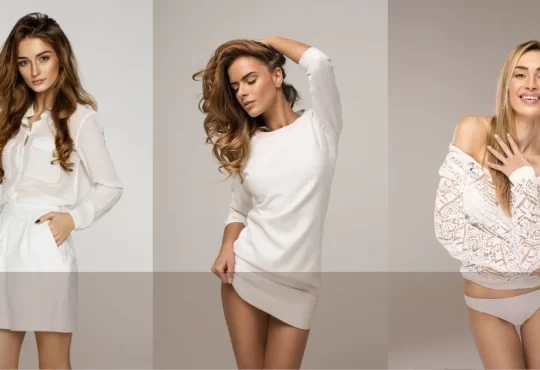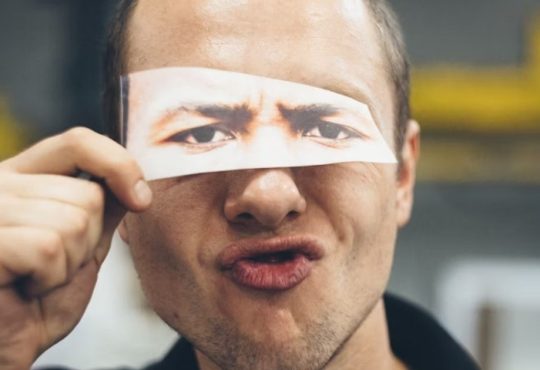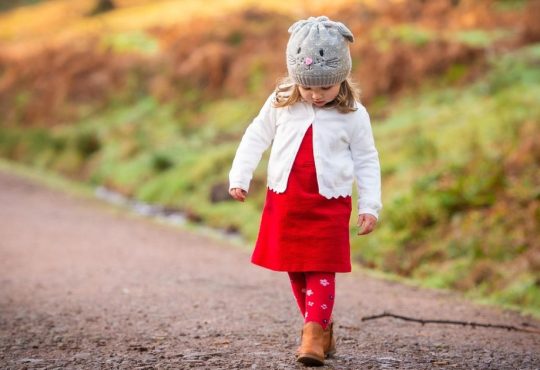Fashion is inherently cyclical, with once-outdated styles returning in fresh, relevant forms. After decades dominated by slim, tailored silhouettes, a shift toward volume and ease has taken hold. This comeback of baggy clothing isn’t just a fashion shift—it signals a deeper cultural reset.
Loose-fitting garments now appear across generations and platforms, from Gen Z’s social media to luxury fashion and streetwear. Their popularity challenges past ideals of structure and control, signaling more profound shifts in collective values shaped by psychological and social currents.
A Comeback with Cultural Roots
Baggy fashion isn’t new. It’s been around for decades, shaped by various subcultures, from the zoot suits of the 1940s to the oversized streetwear of the 1990s and early 2000s. Hip-hop artists, skateboarders, and grunge rockers all contributed to the popularization of loose silhouettes. These styles weren’t just about comfort—they were rebellious, expressive, and anti-establishment. Ah, yes, the 2010s—the decade when yoga pants became brunch-appropriate, and your dad’s closet unexpectedly turned into a style archive.
In the 2010s, slouchy fits made a quiet return, fueled by the rise of athleisure and normcore. Oversized silhouettes and casual comfort became not just acceptable but stylish. Joggers paired with blazers and boxy tees worn as bold statements turned “effortlessly unbothered” into the ultimate fashion move.
The current wave of baggy fashion isn’t merely a nostalgic revival—it’s a reimagined version with a modern edge. It takes oversized influences and infuses them with today’s emphasis on self-expression, comfort, and subtle defiance. It’s as though fashion says, “I’ve grown, but I haven’t forgotten my roots.” Retro cargo pants are now paired with sharp tailoring and updated fabrics, while balloon jeans make a comeback in fresh washes that align with contemporary tastes. Voluminous layers, once haphazard, are now styled with precision, striking a harmonious balance between comfort and control.
This resurgence embodies a duality—deeply nostalgic yet distinctly modern. It draws from a rich sartorial past while simultaneously embracing forward-thinking design principles. The result is a style evolution that honors legacy silhouettes while adapting them to fit the evolving codes of present-day fashion.
The Fall of Skinny: Why Tight Fits Are Losing Ground
Once the ultimate symbol of chic, skinny jeans are slowly slipping off the radar. While they are far from extinct, their dominance has certainly waned. So, what caused the downfall?
- Comfort Over Constriction: The Pandemic Era Redefined Priorities. People began valuing comfort more than ever. With extended periods of remote work, loungewear surged, leading to a broader acceptance of looser, relaxed silhouettes in everyday fashion.
- Changing Aesthetics: Today’s fashion celebrates diversity in body types, identities, and expressions. Skinny silhouettes often fail to flatter a range of figures, whereas baggy clothes offer a more inclusive and forgiving form.
- Cultural Influences: Pop culture is a mirror. The rise of stars like Billie Eilish, known for her oversized wardrobe, and the continued influence of K-pop idols embracing loose styles have inspired a shift among younger generations.
- Sustainability and Upcycling: Oversized vintage finds are easier to repurpose, and the thrift fashion movement has leaned heavily toward 90s and Y2K styles, where baggy ruled supreme.
Baggy’s Big Moment: A Closer Look at the Trends
1. Oversized Pants
Wide-leg trousers, barrel jeans, parachute pants—whatever the iteration, roomy bottoms are everywhere. Designers are playing with proportion, allowing flow and movement to contrast with sharper, more structured pieces up top.
2. The Return of JNCO and Cargo Pants
Y2K fashion’s resurrection wouldn’t be complete without the revival of cargo pants and JNCO-style jeans. These styles blend nostalgia with function, boasting multiple pockets and heavy-duty fabrics. Paired with crop tops or minimalist tanks, they create a perfectly imbalanced yet on-trend look.
3. Maxi Layers and Dramatic Silhouettes
Think longline blazers, oversized button-downs, and floor-grazing coats. These pieces don’t just add visual drama—they serve practical layering purposes and emphasize fashion as a form of comfort-driven armor.
4. Baggy Tailoring
Even formalwear hasn’t escaped the shift. Power suits these days have traded in their razor-sharp tailoring for something a little more relaxed—think broad shoulders, wide-leg trousers, and an effortlessly oversized silhouette. They’re still about confidence and authority, but now they whisper it instead of shouting while giving you room to breathe (literally and stylistically). Slouchy blazers and wide-legged trousers offer a modern twist on classic tailoring, effortlessly blending polish.
Gender Fluidity and Fashion Freedom
The rise of baggy fashion is also closely tied to the movement toward gender-neutral dressing. Oversized fits blur the boundaries between what is traditionally considered men’s wear and women’s wear. As fashion becomes more fluid and expressive, baggy clothing offers a canvas that’s less about body conformation and more about individuality.
Brands are responding accordingly. Power suits these days have traded in their razor-sharp tailoring for something a little more relaxed—think broad shoulders, wide-leg trousers, and an effortlessly oversized silhouette. They’re still about confidence and authority, but now they whisper it instead of shouting while giving you room to breathe (literally and stylistically). Retailers are moving away from gender-specific sections, instead presenting collections that emphasize choice and expression over tradition.
This freedom is resonating. For many, baggy clothes offer comfort, empowerment, and a way to distance themselves from unrealistic beauty standards. It’s no longer just about merging men’s and women’s wear. Androgynous fashion taps into a more profound desire to express identity without constraint. In a culture that is moving beyond rigid labels, it has become a way of dressing that reflects fluidity, freedom, and individuality—less about fitting in and more about standing out on your terms.
Celebrity Influence and Street Style Evolution
The baggy aesthetic is everywhere, from high-fashion runways to the sidewalks of Fashion Week. Celebrities and influencers are both reflecting and driving this change.
- Billie Eilish champions oversized looks, often mixing high-end couture with laid-back streetwear.
- Zendaya, with her effortless blend of oversized suits and glamorous detailing, has redefined red-carpet norms.
- Kanye West has pushed the boundaries of baggy minimalism through his Yeezy brand and personal style.
- K-pop groups like BTS and BLACKPINK have brought the baggy aesthetic to a global stage, incorporating it into their performances, music videos, and airport fashion.
These figures and the social media ecosystems they dominate—especially Instagram and TikTok—have turned baggy fits into aspirational style statements. Influencers post styling tutorials, thrift hauls, and brand collaborations that normalize and celebrate oversized fashion.
How to Rock the Baggy Look Without Looking Sloppy
One of the most common concerns with baggy fashion is the risk of entering frumpy territory. But baggy doesn’t have to mean shapeless or lazy. Here are some styling principles that help strike the perfect balance:
- Balance Proportions: If your pants are oversized, pair them with a more fitted top or tuck in your shirt. Mixing volumes creates a visually pleasing contrast.
- Structured Layers: Use sharp blazers, belts, or cropped jackets to add shape.
- Play With Textures: To add depth, combine denim with satin, cotton with leather, or wool with mesh.
- Accessorize Intentionally: Chunky sneakers, sleek sunglasses, and statement bags—all elevate the look.
- Color Coordination: Stick to a cohesive palette to avoid an outfit that looks too chaotic.
The goal is not to hide behind the clothes but to let them move and flow with you. When styled well, baggy fits exude confidence and creativity.
Brands Leading the Baggy Renaissance
Some fashion labels have been instrumental in pushing the baggy agenda forward:
- Balenciaga: Widely regarded as the frontrunner in high fashion for oversized silhouettes, known for its bold proportions and dystopian-inspired aesthetics.
- Vetements: Known for exaggerated tailoring and streetwear deconstruction.
- Ader Error: The Korean brand’s quirky, oversized designs have found cult status among fashion-forward crowds.
- COS and Uniqlo: These more accessible brands provide sleek, voluminous staples that capture minimalist style while maintaining a strong silhouette.
Traditional brands like Levi’s and Gap have adapted, offering relaxed fits and wide-leg styles that cater to the new demand.
The Role of Thrifting and DIY Culture
Vintage shops, thrift hauls, and upcycling tutorials have played a massive role in the rise of baggy fashion. What once symbolized rebellion or necessity is now a form of self-expression driven by grassroots trends on platforms like Depop, Poshmark, Etsy, and TikTok. Thrift-flipping influencers transform oversized jackets, wide-leg jeans, and shapeless shirts into enviable looks. This digital revival of secondhand style is more than a trend—it’s redefining fashion with a focus on individuality, creativity, and sustainability.
Exactly. At its heart, this shift isn’t just about rejecting convention but crafting a personal signature. In an age of mass production and fast fashion, standing out has become a kind of rebellion. Whether through oversized silhouettes, genderless tailoring, or unexpected combinations, fashion is increasingly becoming a tool for individuality, rather than conformity. It’s less “What’s trending?” and more “What’s me?” Many Gen Z and millennial shoppers are drawn to secondhand pieces because they’re affordable, eco-friendly, and one-of-a-kind.
Vintage finds—like a perfectly slouchy ’90s jacket or a worn-in pair of dad jeans—offer the freedom to play with proportions and textures in a way fast fashion rarely allows. With the rise of DIY, baggy fashion becomes more than a style—it becomes a hands-on, personal project.
Platforms like TikTok and YouTube have exploded with upcycling tutorials, showing how to transform oversized blazers into structured dresses or oversized jeans into custom cargo pants. These creative makeovers breathe new life into old garments, giving wearers a sense of ownership over their style. Thrifting and DIY encourage sustainability and empower people to shape fashion on their terms, blurring the line between following and starting trends.
Ultimately, the baggy trend goes beyond a simple revival of 1990s hip-hop or early 2000s skatewear. It recasts clothing as a dynamic medium for artistic and personal expression. As fashion evolves, baggy silhouettes signal more than volume—they reflect a bold, inventive, and deeply individual approach to style.
Psychological and Cultural Appeal
Baggy clothing transcends trend status, embodying evolving perceptions of comfort, autonomy, and identity. Baggy clothing transcends mere fashion—it signals evolving perspectives on comfort, personal agency, and identity in contemporary culture. Psychologically, the relaxed fit offers protection and freedom, like armor that doesn’t weigh you down. Culturally, it represents a quiet revolt against rigid beauty standards and traditional dress codes, allowing space—both literally and figuratively—for self-expression, fluidity, and nonconformity.
In many ways, it’s fashion’s version of a deep breath. Loose silhouettes offer a tangible sense of comfort and psychological security in periods marked by uncertainty, such as global health crises, political unrest, and social transformation. The physical ease of oversized garments creates a buffer against external stressors, functioning as a protective layer that allows for disengagement without complete withdrawal.
Culturally, the trend operates as a subtle form of resistance against rigid beauty ideals and societal expectations by embracing oversized fashion norms and celebrating fluidity, imperfection, and autonomy. In the context of rising mental health awareness, especially in the aftermath of widespread societal disruptions, the appeal of unstructured clothing underscores a broader desire for authenticity, control, and emotional well-being. Exactly. This movement doesn’t just ride the trend cycle—it challenges it.
Baggy clothing may have re-entered the scene with a nostalgic wink, but it’s sticking around because it resonates on a deeper level. It reflects a collective craving for ease, individuality, and emotional armor in uncertain times. Far from being a fad, baggy clothing has become a sartorial expression of authenticity, inclusivity, and a growing rejection of rigid social norms, both in form and philosophy.
Embracing Comfort and Self-Expression with Baggy Styles
Skinny jeans had their moment, and they’re likely here to stay in some form. But fashion has shifted, and its focus is now broader—literally. Baggy clothing isn’t just a passing trend; it’s a reflection of changing values. Comfort, fluidity, inclusivity, and self-expression are now at the forefront of the style conversation.
As designers continue to experiment with volume and everyday wearers embrace the freedom of movement, it’s clear that fashion’s future is all about draped, roomy, and unapologetically loose styles. Whether you’re wearing oversized denim, a floor-length trench, or a slouchy suit, remember—it’s not about hiding but about owning your space. And it turns out that baggy might be the best way to do that.





